-

Anfibio Revo CL
-

Anfibio Revo XL+
-

Anfibio Omega C2(+)
-

Anfibio Omega C2B+
-

Anfibio Rebel 3KL+
-

Anfibio Rebel Duo(+)
-

Anfibio Sigma TXLB+
-

Anfibio Sigma TXL(+)
-
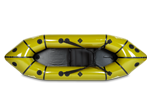
Anfibio Sigma TX
-
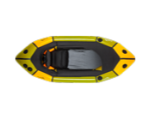
Anfibio Rebel 2K
-

Anfibio Delta MX
-
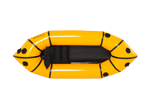
Anfibio Alpha XC
-

Anfibio Nano RTC (XL)
-
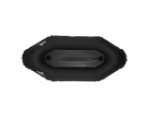
Anfibio Nano SL
-

Anfibio Revo CL
-

Anfibio Revo XL+
-

Anfibio Omega C2(+)
-

Anfibio Omega C2B+
-

Anfibio Rebel 3KL+
-

Anfibio Rebel Duo(+)
-

Anfibio Sigma TXLB+
-

Anfibio Sigma TXL(+)
-

Anfibio Sigma TX
-

Anfibio Rebel 2K
-

Anfibio Delta MX
-

Anfibio Alpha XC
-

Anfibio Nano RTC (XL)
-

Anfibio Nano SL
- Packrafts
- Paddle
- Packing
- Clothing
- Accessories
Back
Back
Back
Interview FAZ
16 questions for Sven Schellin (Anfibio Packrafting) about packrafting in general and Anfibio in particular. By Alexander Davydov (FAZ).

1. how did you get into packrafting?
Sven: That was in 2007, when I was looking to combine my passion for ultralight hiking with paddling. Water has always been my element, because waterways are always natural, promise the most freedom and access to wilderness and are relatively comfortable. However, the equipment for this is usually anything but travel-friendly. That’s how I came across the – very old – concept of packrafting, even if it wasn’t called that in its early days. Combining land and water is above all an idea. I also learned that it’s all about imagination and creativity. What you use to realize packrafting, how you design it for yourself, is almost secondary.
In 2008, we traveled from Belarus to Albania in an imported mini boat – two full-grown men and a combined space of no more than 135 cm. The attitude and willingness to improvise were fabulous.
My partner Marc himself was a packrafter with products from socialist stocks from GDR times, which even made it into the German Wikipedia as an entry.
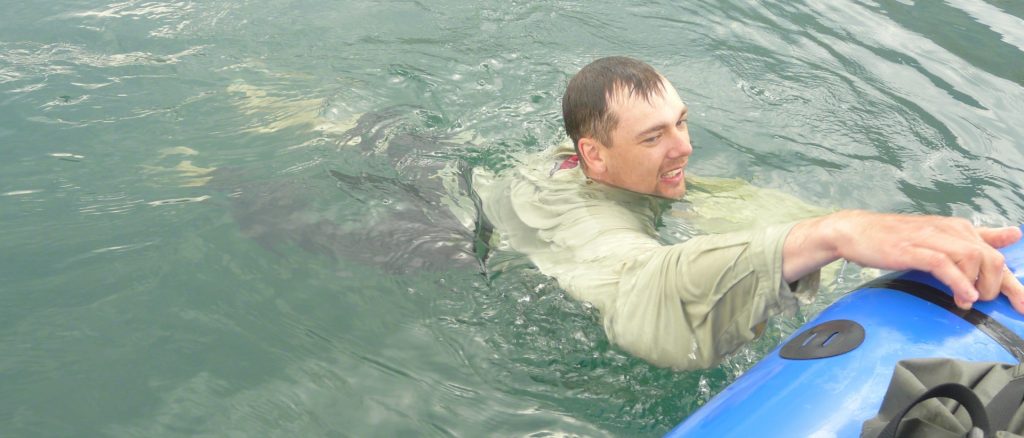
2. What can be understood by packrafts?
Sven : Packrafting in the original sense is the combination with other forms of transportation, which is only possible with backpack-compatible boats. Traditionally, this is hiking and mountaineering, but also cycling and inline skating as well as public transport.
None of this is dogma. You get used to a light, functional boat very quickly, at the latest when transferring or arriving. Classic paddling with arrival and departure by car is of course also permitted.
Motorhome drivers appreciate it just as much as sailors. Packrafting is as diverse as its owners.
3. What makes a good/ideal boat? What do customers need to look out for?
Sven: It’s difficult to give a general answer because of the diversity.
After all, the range extends from an 800g boat the size of a rain jacket to a full-grown 6kg white-water two-seater.
But quite simply put, a good boat fulfills its purpose. This is especially true of a packraft, because it should do no more and no less. In principle, “the smallest tool for the job“. So the most important thing is to ask yourself what you have in mind – and then seek advice accordingly.
Of course, there are a few criteria that you can always bear in mind. PVC material, for example, is a clear exclusion from our point of view. The retailer’s general conditions are also important. Good service such as rapid availability, quick exchange or a workshop saves possible disappointment.
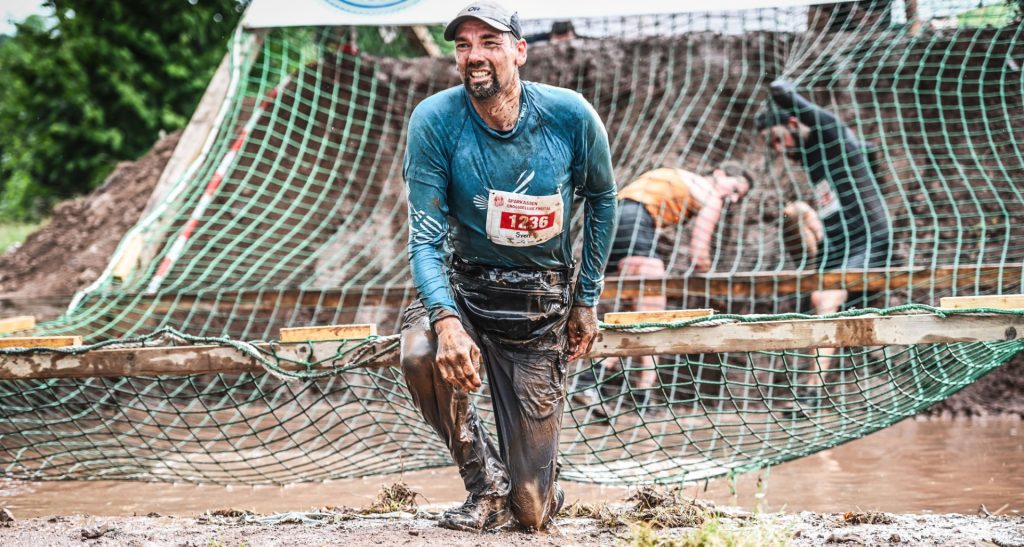
4. What is the typical area of application for a packraft?
Sven: All types of water can be used, as long as they require the use of a packraft (e.g. are easier to access).
Exceptions are very long distances on open water such as the sea or extreme white water.
Of course, this type of boat can show its strengths on moving water. A packraft is certainly in good hands on the river. Depending on the type, it is also suitable for challenging white water. Other models also cut a fine figure on lakes.
And in the end, you’re glad you have the boat with you at all! The last bit of performance is then of secondary importance.
So whether it’s a Norwegian fjord, a Polish swamp, a lake in Mecklenburg or a wild river in the Alps – packrafts can now be found everywhere.
5 Does a packraft have a particular advantage over other boats?
Sven: Oh, I can think of a few, such as easy transportation, universal use, versatile combination possibilities, new interpretation of water sports, capsize-proof use, easy to maneuver, intuitive to learn, comfortable fit, fast reaction, forgiving driving behavior, tolerance of ground contact and collisions, little storage space, maintenance-free, insensitive, resistant to aging, durable, cold-elastic, environmentally friendly (if so manufactured), and one could certainly continue this list …
6. What makes Anfibio stand out from the competition?
Sven: We are a passionate specialist in packrafting with pioneering work in Europe. The name represents not just a product brand, but the organization of blog, store and gear, from inspiration to product development.
It is characterized by the coordinated complete range of backpacking boats and ultra-light water sports equipment. Especially with specific accessories you often look in vain elsewhere.
On the product side, we have made a name for ourselves in the ultralight segment in particular, i.e. we offer the lightest packrafts on the market . Their construction is also 100% environmentally friendly and welded without adhesives.
Last but not least, the customer benefits from the efficient logistics and smooth service of an established provider.
At Anfibio, you can feel the long experience from the developments of the last decade. Since 2011, we have been consciously selecting, lovingly designing, continuously improving and paying attention to quality at an appropriate price-performance ratio.

7. where are Anfibio products manufactured?
Sven : Just like the mixed business model as a manufacturer, importer, retailer and service provider (but with a thematic focus on the outdoor activity of packrafting), Anfibio is a rather decentralized company. In line with the heterogeneous portfolio (including accessories), production takes place very differently and flexibly. We currently manufacture in Germany, France, Estonia and China.
8 What should I pay particular attention to when maintaining a packraft?
Sven: Not much, see advantages under question 5. They are considered maintenance-free and long-lasting. The most important thing is to maintain your attitude: childlike curiosity, improvisation, self-irony and a sense of humor.
9. Where have Packrafts from the Anfibio range already been used?
Sven: As far as we know, there is no region or country where Packrafts from our range have not yet been used. Outstanding are certainly the Putorana Plateau in the central Siberian highlands (Anfibio Nano SL), a jungle river jungle river in Cameroon Cameroon (Anfibio Revo XL), the Greenland fjords (Anfibio Sigma TX) or the Bolivian rainforest (Anfibio Delta MX).

10. where might a packraft reach its limits compared to boats made of solid material?
Sven : Strong winds, low top speed and a safe eskimo roll are certainly the Achilles heel of this type of boat. This means that areas such as the open sea are reserved for sea kayaks and extreme cataracts for whitewater kayaks.
11. has the popularity of packrafting increased in Germany?
Sven: Yes, absolutely, the concept fits in well with the trend of our time: independent, self-sufficient, mobile, spontaneous, short but intense.
12. which routes would you particularly recommend in Germany?
Sven: None, the attraction lies in discovering and recombining local destinations. New territory awaits everyone here!
13. what are the costs including the necessary accessories? How much should you invest?
Sven: That depends, special packrafts are already available from 329€ . A divisible paddle (59€) and a life jacket are also enough to get you started. A helmet and other safety equipment are only relevant for white water use. You can get a pretty good mid-range package for less than €1000.
14. is packrafting also something for beginners or do you need special courses?
Sven: A packraft is certainly very beginner-friendly. With common sense in the boat, curiosity and a good dose of respect, you can take your first steps and strokes without any special training. However, specialized course providers will of course help you to consolidate your skills, especially when it comes to more challenging areas, as water has no bars.
15. are there any prejudices or misinformation about packrafts that you often have to correct?
Sven: Not (that often) any more. But of course, it still happens that you get ridiculed for “not being a real boat” and so on, especially by classic canoeing disciplines, who often find it difficult to look beyond their own coaming.
Also not uncommon: “ What happens when you drive over a stone? can you even repair and how is it even inflated? ” – these are the typical questions from newcomers.
In the meantime, people often react with curiosity and fascination to what they perceive as high-quality products.
16. can you tell us a bit about the history of your company?
Sven : We have been in business since 2011 (when we were registered as a commercial enterprise). We started out as a dealer, introduced our own products (paddles, drysuits) relatively quickly (2012) and started developing our own packrafts in 2015. Since 2016/17 at the latest, we can look back on a full range of our own products.
We currently have 7 full-time employees, but that doesn’t necessarily say much, as it depends on which areas you cover externally (from accounting to production to logistics). Overall, we have a lean structure based on our core competencies.
Herzlich willkommen bei Anfibio
Was ist dein Anliegen? Womit können wir dir helfen?
Produkt & Beratung
Der Kundenservice unseres Stores berät Sie gern zu Ihrem Anliegen.
Geschäftskunden & B2B
Sind Sie an zuverlässiger und namhafter Ausrüstung inkl. Beratung für ihr Geschäft interessiert?
Zulieferer & Dienstleister
Wir sind an langfristigen Partnerschaften mit internationalen Lieferanten und Dienstleistern interessiert.
Karriere & Bewerbung
Sie möchten Teil unseres Teams werden und Ihre Begeisterung für die Freiheit am Wasser zum Beruf machen?
You are currently seeing a placeholder content of OpenStreetMap. To access the actual content, click on the button below. Please note that data will be passed on to third-party providers.
More informationYou need to load content from reCAPTCHA to submit the form. Please note that doing so will share data with third-party providers.
More InformationYou are currently viewing a placeholder content from Facebook. To access the actual content, click the button below. Please note that doing so will share data with third-party providers.
More InformationYou are currently viewing a placeholder content from Instagram. To access the actual content, click the button below. Please note that doing so will share data with third-party providers.
More InformationYou are currently viewing a placeholder content from X. To access the actual content, click the button below. Please note that doing so will share data with third-party providers.
More Information